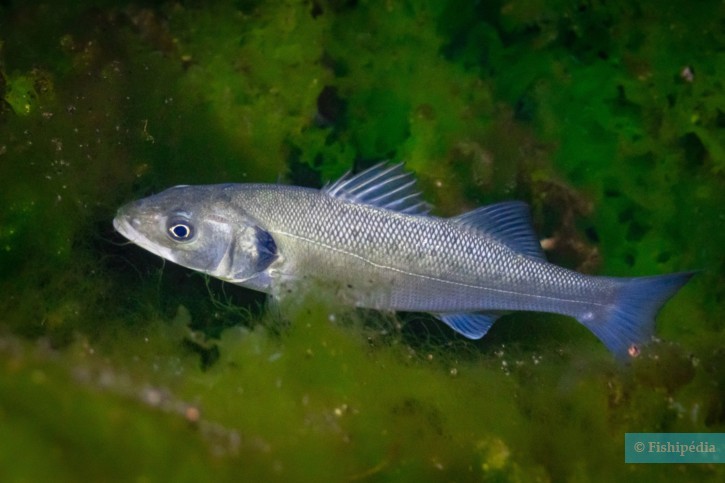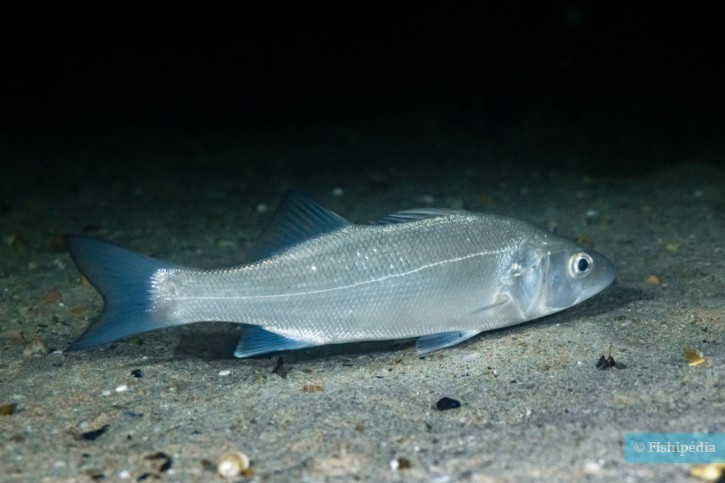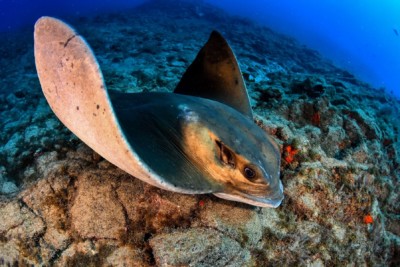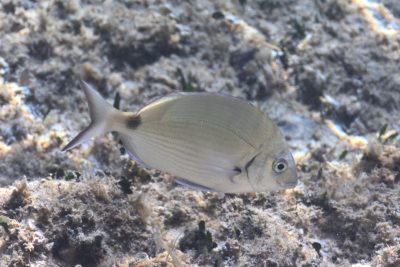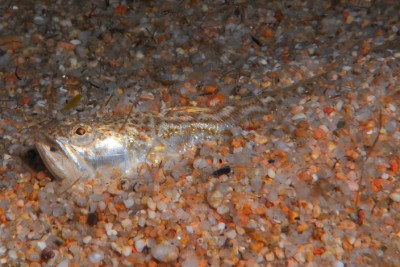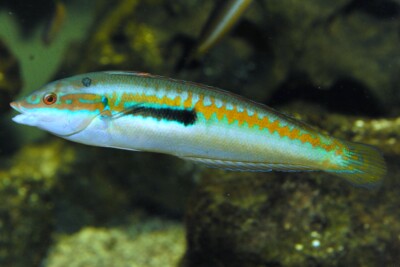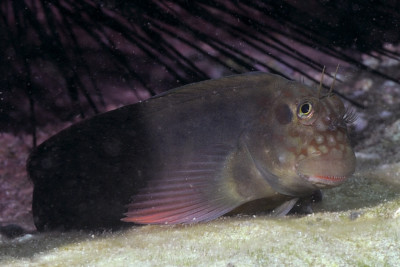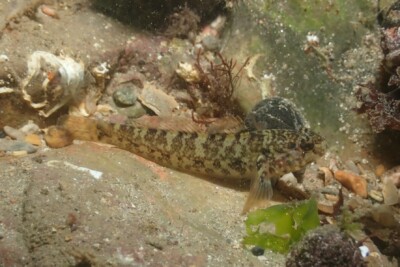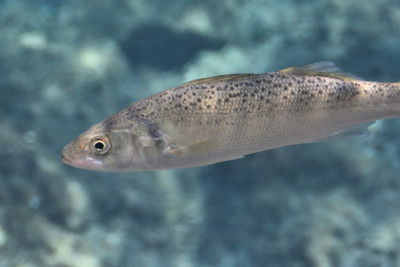european seabass
| Scientific name | Dicentrarchus labrax |
|---|---|
| Descriptor | Linnaeus |
| Year of description | 1758 |
| IUCN category (World) | NT |
| Family | Moronidae |
| Genus | Dicentrarchus |
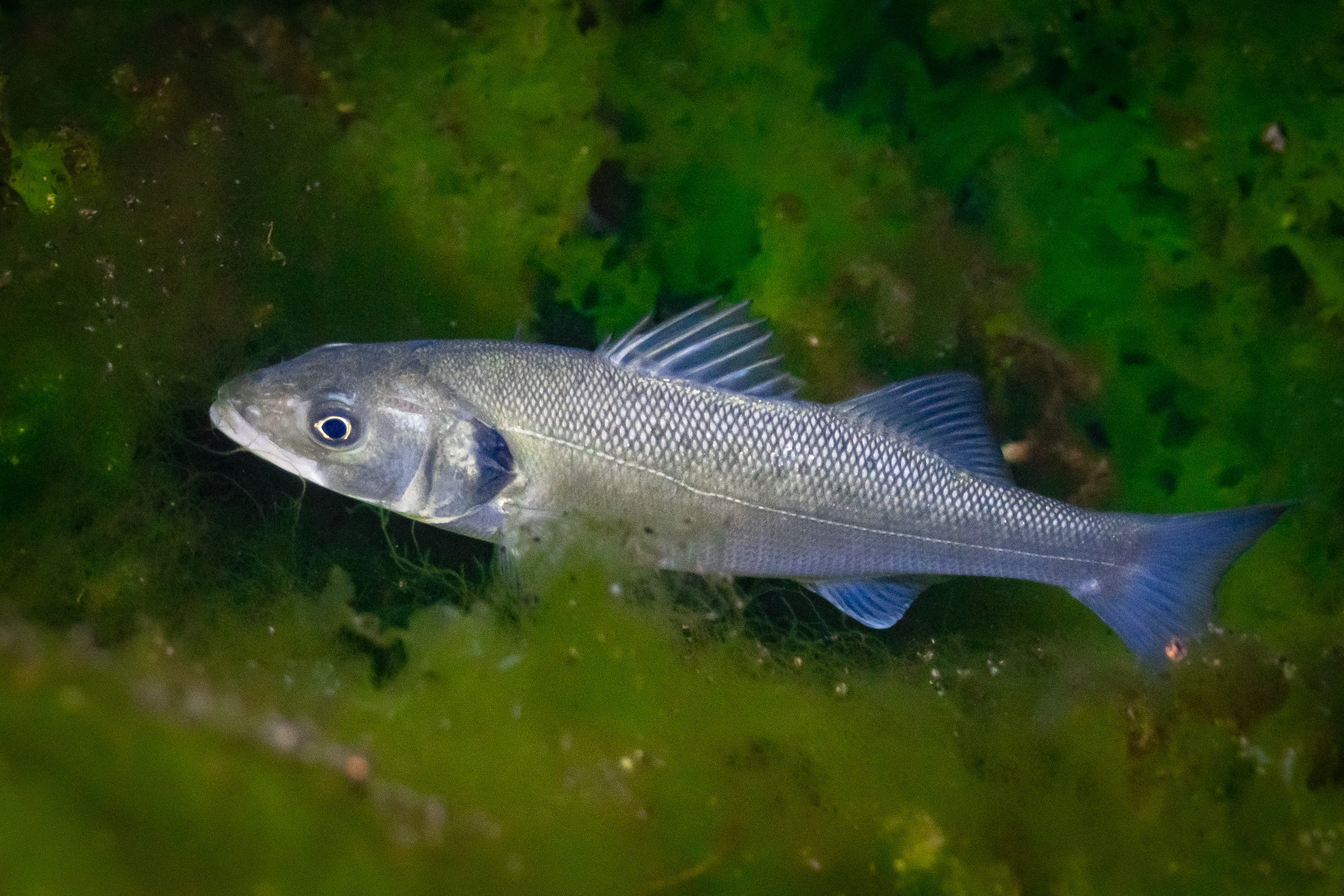

Introduction
Dicentrarchus labrax commonly known as "european seabass" or "common sea bass" is an emblematic fish of European coasts. It is found from the North Sea to the Mediterranean. Its abundance varies depending on the regions and fishing pressure.
Easily observable from the surface, it is a good indicator of the quality of coastal marine ecosystems.
In France, it is one of the most consumed fish: in 2019, 4,204 tons were sold, a market valued at over 58 million euros. Its aquaculture farming is increasing throughout Europe.
This sheet is currently being prepared. The texts currently proposed come from our data model or are being drafted. To request priority for this content, you can write to us HERE.
Who is it?
Genus Dicentrarchus
The species of the genus Dicentrarchus are commonly called "european seabass" or "sea bass." They belong to the family moronidae. There are currently two species related to this genus: Dicentrarchus labrax (european seabass) and Dicentrarchus punctatus (spotted seabass).
European seabass are medium to large-sized fish (40 to 70 centimeters), with a fusiform body, slightly compressed on the sides. The largest specimens reach 1 meter in length and 15 kilograms in weight.
They are silvery or spotted, always in shades of gray. They are often found in schools in rocky areas in shallow coastal waters (less than 100 meters).
They are predators with a broad head and like to hide in currents to ambush their prey. They have two dorsal fins, the first of which has spines that can surprise fishermen. The pectoral fins are long and pointed. Three spines are present on the anal fin.
These species are frequently consumed, and their population is declining.
Morphology
-
Average size50 cm
-
Maximum size100 cm
-
Longevity30 year
-
ShapeOval
-
Average size50 cm
-
Maximum size100 cm
-
Longevity30 year
-
ShapeOval
How to recognize This fish ?
The European seabass is an elongated fish with a silvery coloration. The back and tail tend towards a darker gray while the flanks lighten near the belly.
It has two dorsal fins, the first with about ten spines, while the second has only one. The anal fin has three spines and about ten soft rays.
The body is covered with scales. A line connects the top of the gills to the caudal fin but does not cover it. Some specimens have blueish reflections on their back, and the belly may tend slightly towards yellow.
Sexual dimorphism
Male and female are not easily distinguishable.
Behaviour & Life cycle
-
dietcarnivorous
-
Sociabilityliving in a group or alone
-
territorialNo
-
Way of livingdiurnal
European seabass are fast and active fish, with a gregarious tendency.
Juveniles live near the coast, in shallow waters. As they grow, they frequent rocky bottoms, composed of rocks, pebbles, and sand, and move away from the coast. These environments provide favorable hiding places and hunting grounds.
European seabass are carnivorous. They excel in the art of hunting. In the open sea, they prey on fish and cephalopods, while near the coast, they target small crustaceans and other smaller organisms.
Reproduction
European seabass are gonochoristic, with external fertilization. They reproduce once a year. The spawning season begins in August in warmer waters and can extend over several months as it moves towards colder waters.
Spawning occurs in winter, from December to March. It is delayed in the Atlantic and in colder seas. The water temperature must be between 12 and 14°C.
Harmless species
This species does not represent a particular danger to humans in case of encounter in its natural habitat.
Origin and distribution
Geographic distribution & Conservation
The European seabass is primarily found in the Mediterranean and on the Atlantic coasts of Europe. It is present in the North Sea and the English Channel. The most southern populations have been recorded in the Red Sea and north Africa.
Although not threatened in the short term, there is a decrease in the size of catches, suggesting that they are being caught at increasingly younger ages, before reaching sexual maturity. Several European countries, including France and Ireland, have implemented species conservation policies by restricting the size of catches and fishing periods. These still timid limitations mark the beginning of a species conservation plan.
The European seabass is not directly sensitive to heat and adapts to the cold waters of the English Channel as well as the warmer waters of the Mediterranean. However, studies have shown that the increase in CO2 in the water disrupts their olfactory capabilities, increasing their difficulty in feeding. Acidification of the Mediterranean could therefore have significant consequences on the populations.
A European seabass has a 100% chance of reproducing when it reaches a size of 42 centimeters, yet the mesh sizes allowed for professional fishermen in Europe remain below this size (around 36 centimeters). Therefore, some of the fish caught may not have had time to reproduce.
Although sensitive to stress and various viruses, the European seabass is now one of the most studied species in the context of aquaculture. The future of wild populations could depend on these new farming practices.
Conservation status of populations (IUCN)
What is its habitat?
Natural environment characteristics
-
Depth0 - 100 m
-
FlowStrong and Medium
Biotope presentation
The European seabass is benthopelagic. It frequents coastal areas, especially rocky bottoms covered with sand. It prefers areas where the water is lively and oxygenated. They are mainly found at depths of less than 100 meters.
Species of the same biotope
To go further
Sources & Contributions
Participation & Validation
The Fishipedia team and specialist contributors are committed to providing high-quality content. However, although the information comes from scientific sources or testimonials from specialists, the cards may contain inaccuracies.

Benoit Chartrer

Marc Raggi

Silvia Gomez

Marine Kassel
Translation
Translation done with the valuable contribution of our translators, who make this information available to a wider audience. We sincerely thank them for their commitment.

Benoit Chartrer
Bibliographic references
Cycle sexuel et fécondité du LoupDicentrarchus labrax - - 0.
PRODUCTION DE JUVENILES DE BAR (Dicentrarchs labrax) EN MARAIS - O. Boussard - v. Buchet - H. Palvadeau - - 1995.
Scientific partners
Tags
Same genus
Species of the same biotope
